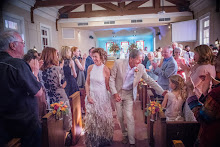Tuesday, March 7: Slow Down and Learn
SLOW DOWN AND LEARN MORE
In the Byron Katie work, many people, myself included go through times when we don’t avail ourselves of the marvelously transformative possibilities of this work. Instead of doing the work, we avoid one stage and stay stuck, stuck, stuck, stuck, stuck. That stage is “Write it down.” Instead we think the thought over and over and over and over and wiggle with it, and justify it, and wish it weren’t there, and think about doing the work. But we don’t, “Write it down.” ( Judge your neighbor, Write it down, ask four questions, turn it around.)
What is writing it down all about? It’s about slowing down the mind so we can see and notice what we are doing. For many years I “worked on” my relationship with my Dad. Once I wrote down, “My Dad shouldn’t have been so critical,” and begin to do the work, years of suffering melted away. The problem wasn’t my Dad. It was my habit of going over and over in my thoughts and making myself feel bad over and over.
Slow down the thoughts and then we can work with them.
The same in the Feldenkrais work. I went to a wonderful yoga workshop this weekend, but the teacher didn’t understand that learning needed to have a slowness to it, in which something absolutely new can be clearly experienced. When that happens, learning takes place. This teacher did a marvelous job of showing new ways of doing things, which is another secret to having a happy brain: variety, variation, novelty. But she didn’t understand, in her “moving things along,” that a certain slowness is crucial if people are to learn. Learning is an active process. New connections are literally made in the brain. This takes time. Not a lot, but some. In Feldenkrais, resting between trying our various movements is crucial to its huge powers of transformation. In these “rests” the brain can review and lay down new wiring. The tool behind this wiring is attention, awareness, the ability to know what we are doing when we are doing it. ( Sitting in a chair, how are we sitting now. Breathing in the air, how and we breathing now. Looking with our eyes, how are we looking now.)
Combine awareness with movement and you have heavenly food for the brain, whose first and still primary task is to figure out how to move us in the world. Make a model of the human body of clay or bronze. Get it to stand on feet as small as ours. This is amazing, and you’ll see why all human shaped statues have huge pedestals, or the figure has a staff, or both. To walk is actually easier than to stand. Walking is a sort of continuous falling and catching ourselves, but to do this requires huge understanding that we gained when we were babies, when we were the smartest we will ever be, when our job in life was discovery and exploration.
We were in no rush to learn to crawl, but we kept at moving this and moving that for hours, exploring, trying possibilities, going down dead ends, learning, learning, learning. We took time to pay attention. We were in no hurry. Time didn’t exist for us. Only the moment. Only learning.
( Workshops coming up in both Feldenkrais and Byron Katie work. New Sunday class of advanced Feldenkrais with yoga applications, at 5 PM, at the Sonoma Ballet Conservatory.)






0 Comments:
Post a Comment
Subscribe to Post Comments [Atom]
<< Home